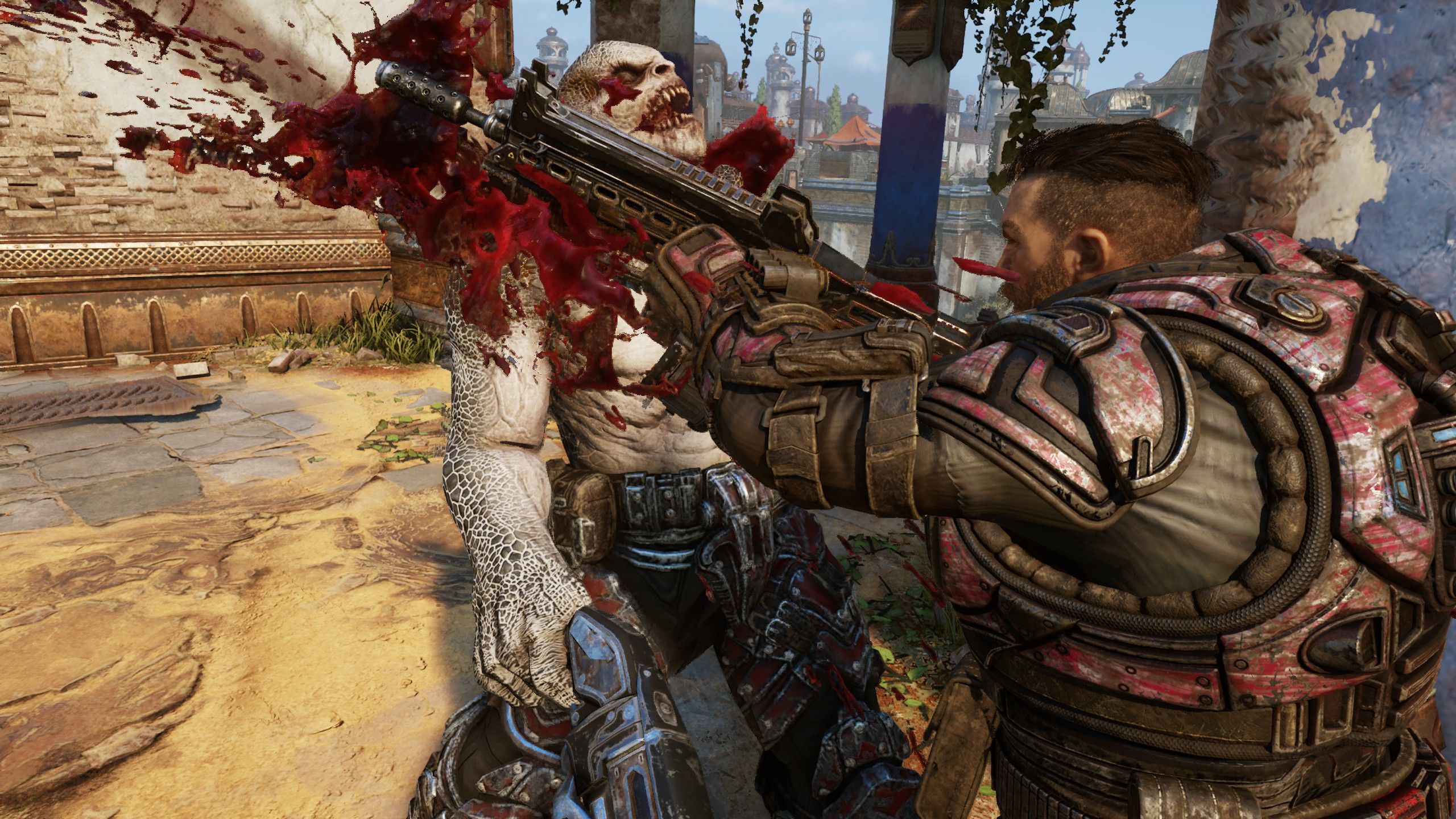
Gears Tactics and I share the belief that a sniper rifle should practically be an extension of the hand of god, so powerful that it feels like you’re being unfair to the poor AI grunts who wander into range. Twenty hours into my campaign my sniper’s hotbar was overflowing with abilities. I could fire off something like 7 rounds in a single turn, chaining together shots that gave me free reloads and shots that restocked my pool of action points. And because I’d completed some hard side missions in search of “legendary” loot, my sniper rifle was tuned up with parts that guaranteed—to use the technical term—a sick-nasty critical hit rate.
What is it? Turn-based strategy, with chainsaw guns
Expect to pay $60 / £50
Developer The Coalition / Spash Damage
Publisher Xbox Game Studios
Reviewed on GTX 1080, Intel i7-6700K, 16GB RAM
Multiplayer None
Link Official site
Taking aim at the final boss with 85 percent crit chance almost felt like cheating. This is the power fantasy version of a tactics game, and pure, pitch-perfect Gears of War, right down to the cranial pop of a Longshot sniper rifle’s bullet landing a critical headshot.
Like the third-person shooters of the proper Gears series, Tactics has a linear campaign, told with very pretty Unreal Engine-powered cutscenes between missions. It’s easily the best-looking tactics game I’ve played, thanks to those cutscenes and fastidiously detailed environments. The series is mostly known for its macho, impossibly barrel-chested soldiers, but it has had some great art direction here and there—grand classical architecture ravaged by years of war. It’s hard to oversell how precisely this game translates the look and combat feel of the other Gears games into this overhead turn-based perspective, down to the magnetizing slide into cover that characters make.
Gears Tactics is an aggressive strategy game that throws piles of enemies at you, because it knows just how powerful the tools at your disposal are. It knows you’ve got frag grenades that can turn a pack of five scurrying wretches into chicken nuggets, or a chainsaw gun that has a 100-percent chance to slice even a full-health Locust soldier in half. (I like to imagine that the chainsaw’s lengthy cooldown isn’t because it’s overpowered, but because my hero, Gabe Diaz, has to spend the next few turns scraping bone chunks and viscera out of the blades).
While it first looks an awful lot like XCOM, which has inspired a wave of strategy games this decade, Gears Tactics plays differently. Every turn in XCOM is about the tension of how few moves you can make, the dramatic risk of missing a single shot and scrambling for a backup plan. Gears is more freeform, giving each of the four soldiers you take into a mission three actions per turn; any combination of moving, shooting, and special abilities you want. Every time one of your soldiers performs an execution move on a near-death enemy, the rest of the squad gets an extra action point for the turn, the game design equivalent of a platoon shouting Hooah!
These two things give Gears Tactics a remarkably different flavor: You’re not trying to make the best of your meager options each turn. You’re trying to extend your turn as long as possible, every kill offering up the opportunity to earn three more actions, and another kill, and three more actions, until everything lies dead at your feet. I love how it makes every turn an exciting chance to clear the whole screen of enemies in one go, and it pushes me to experiment with how I combine my squad’s many abilities.
Gears Tactics does lose the sharp edge of danger XCOM has, where dealing with units dying through the campaign is arguably a feature. Unless you play on the highest difficulty setting in Gears, you can revive soldiers multiple times, and on the recommended intermediate setting there was only one time in my entire campaign where I came close to permanently losing someone. That was a thrill. If you’re not playing on Insane, you probably won’t care much about the stream of recruits that join your squad, though the option does exist to give them custom names and makeovers, if you want to.
You’re trying to extend your turn as long as possible, every kill offering up the opportunity to earn three more actions, until everything lies dead at your feet.
I think the developers could’ve made revives stricter to get back some of that risk, but for the most part I enjoyed being challenged by a tactics game without constantly feeling stressed. Gears trades away a bit of tension and gains some welcome speed and flexibility in its place.
For example, the support class can gift an action point to a squadmate, and I love pairing that with another ability, Teamwork, that earns the support soldier an action back each time that squadmate gets a kill. It’s like placing a bet on a particular soldier—yeah, they’re definitely gonna kick some ass this turn—and then trying to follow through. My preferred strategy is to cast Teamwork on my scout right before she tosses a frag grenade into a pile of Locust for a couple guaranteed kills (and guaranteed action points).
Gears Tactics builds on its executions really, really well through class skills and its take on overwatch, a skill popularized by XCOM that lets you fire on enemies when they move. Put a Gear on overwatch with three actions banked up and they can fire three times. But enemies use overwatch aggressively, too, to pin down your squad. Gears’ freeform action system is more forgiving than XCOM’s, but it often sets up these puzzles for you to get out of, where two members of your squad can’t move without getting shot to pieces, and the other two have to kill the overwatching Locust to free them up to use those actions safely.
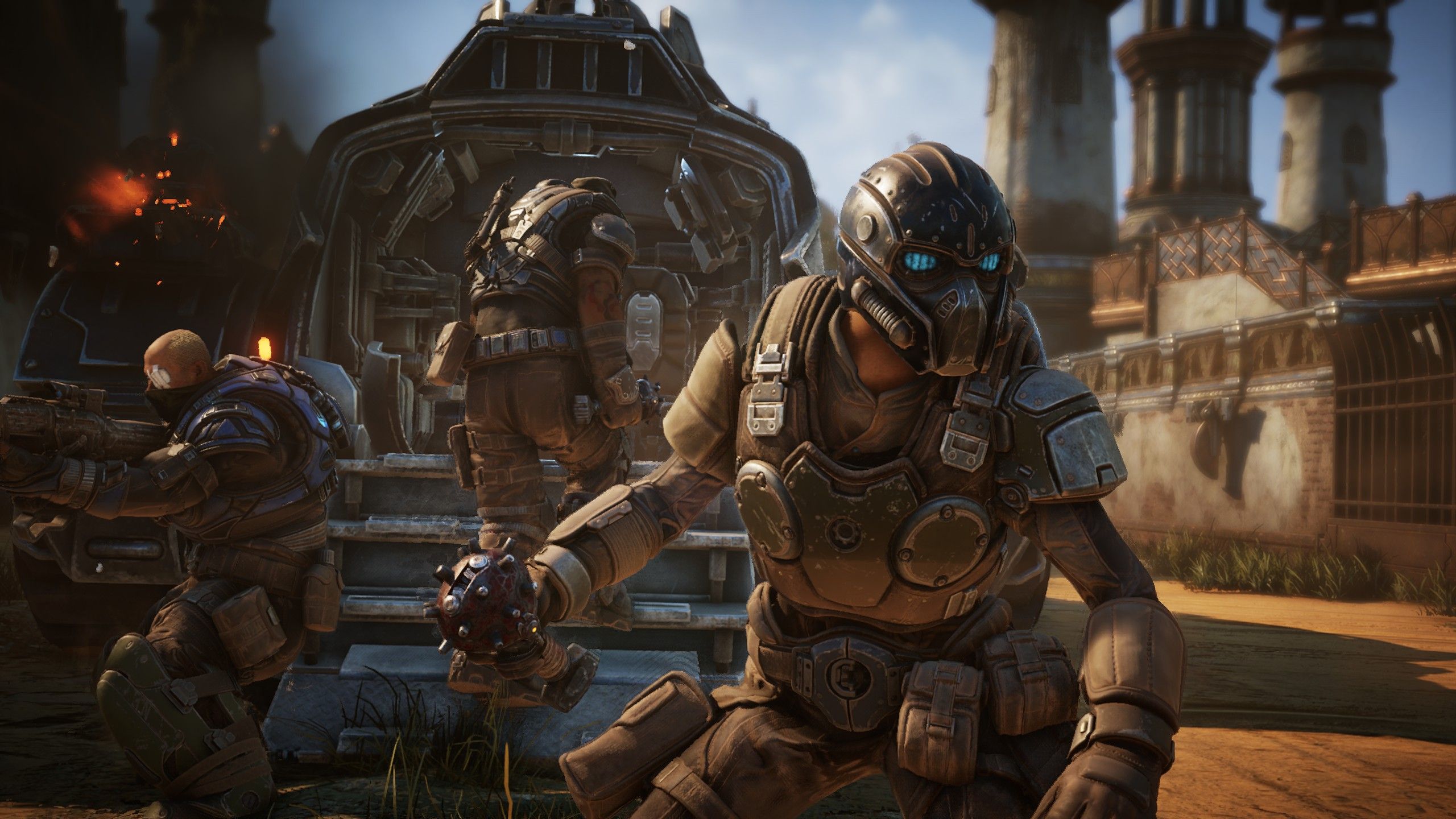
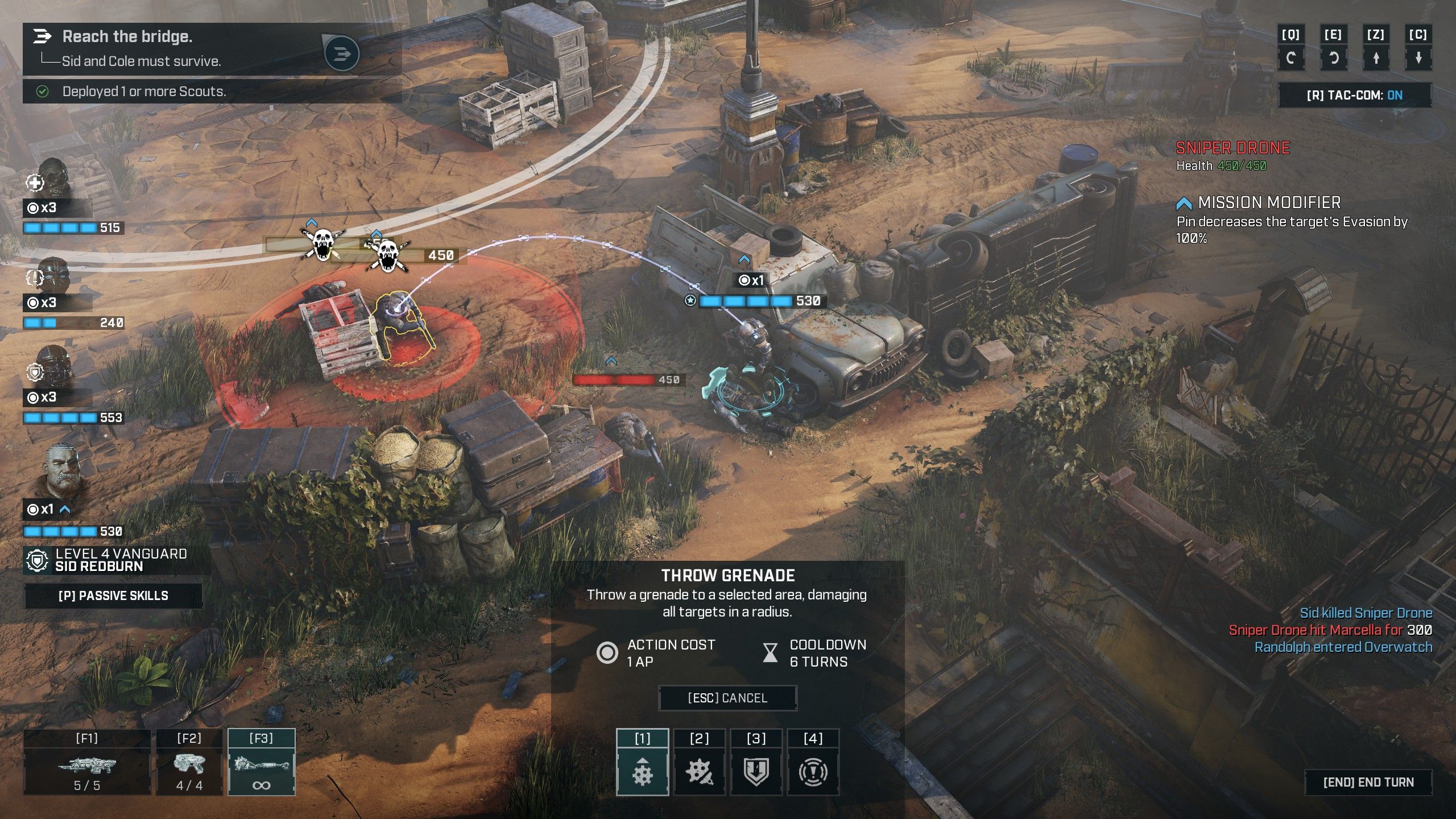
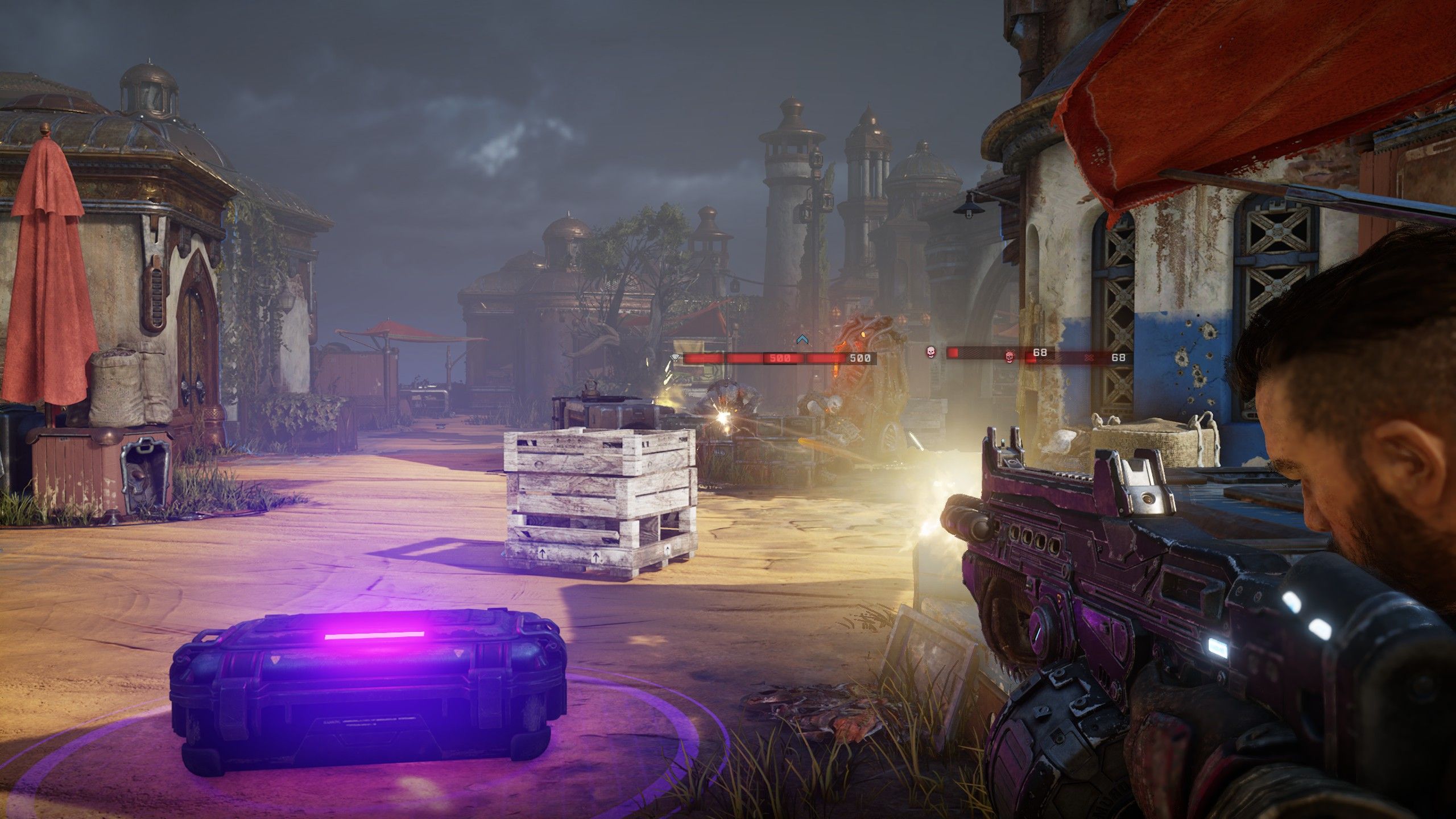



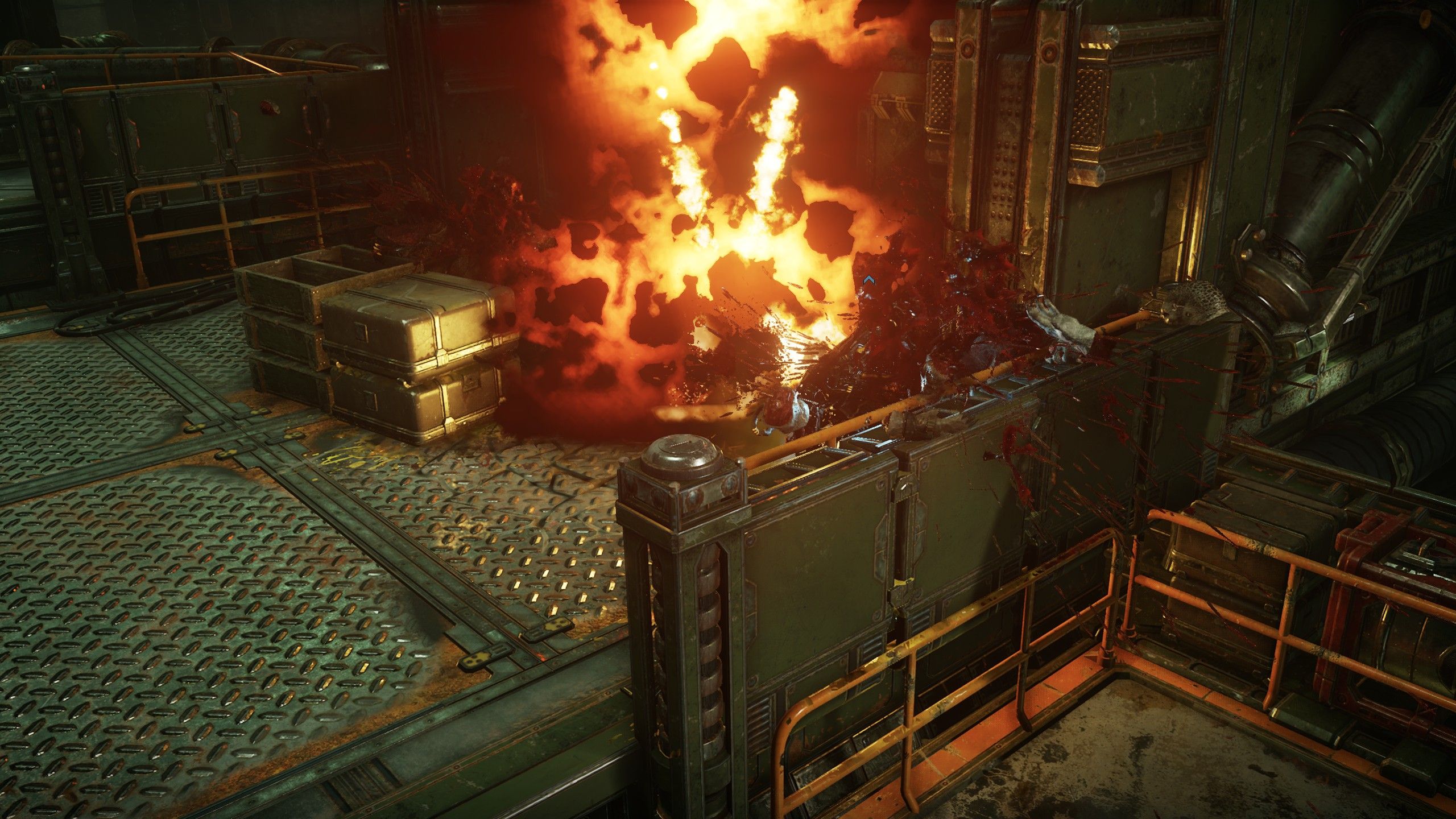
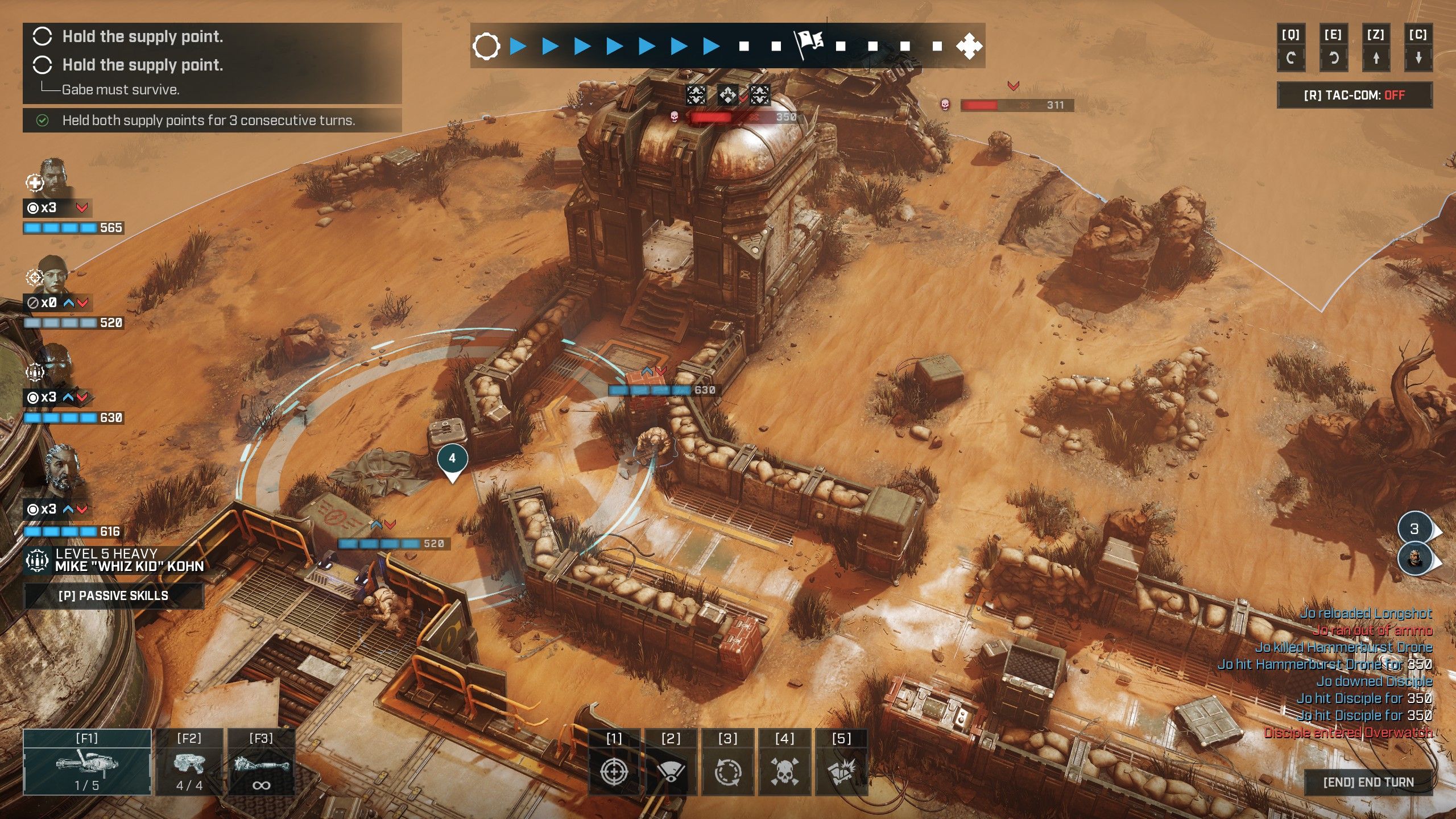
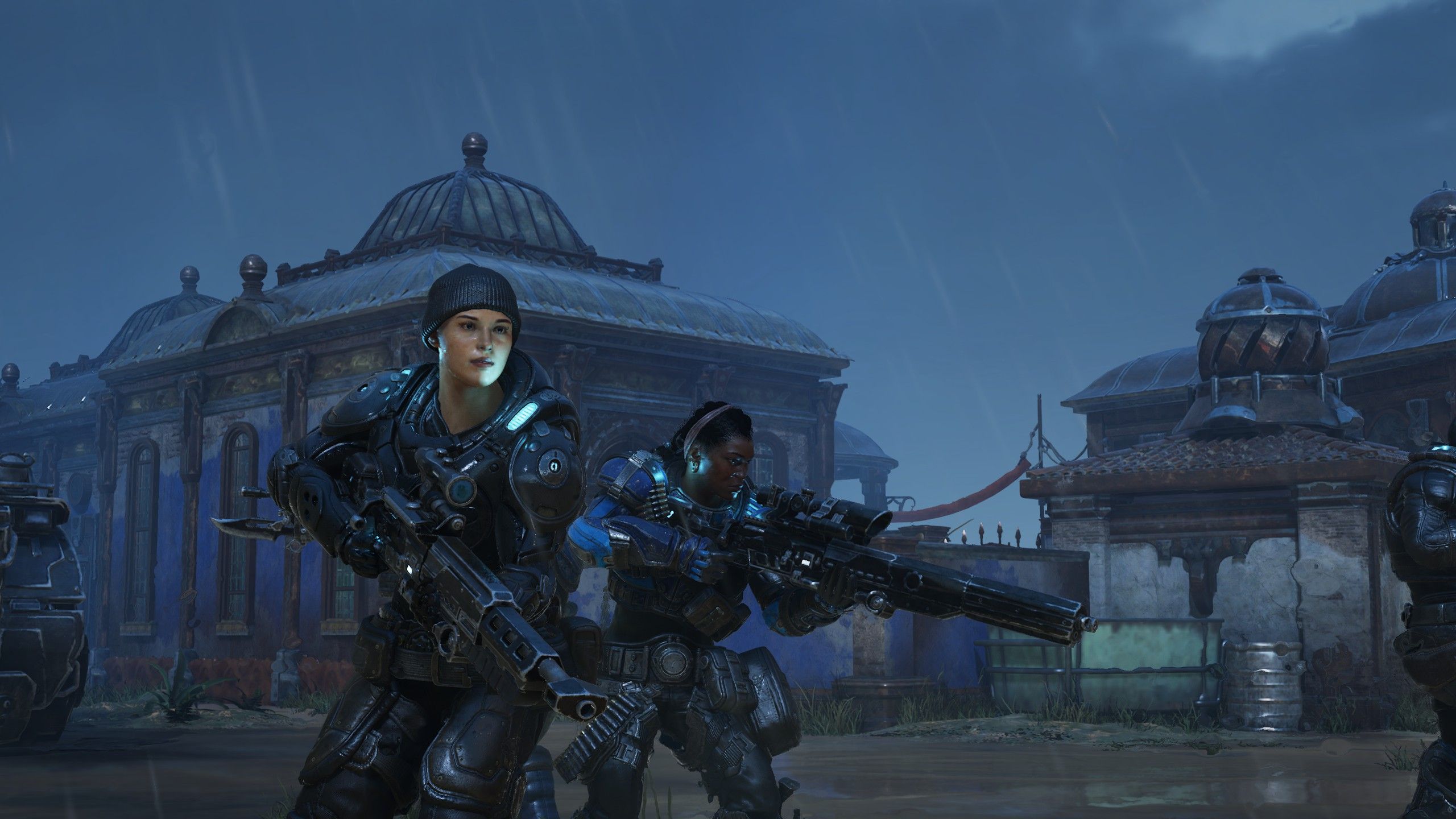


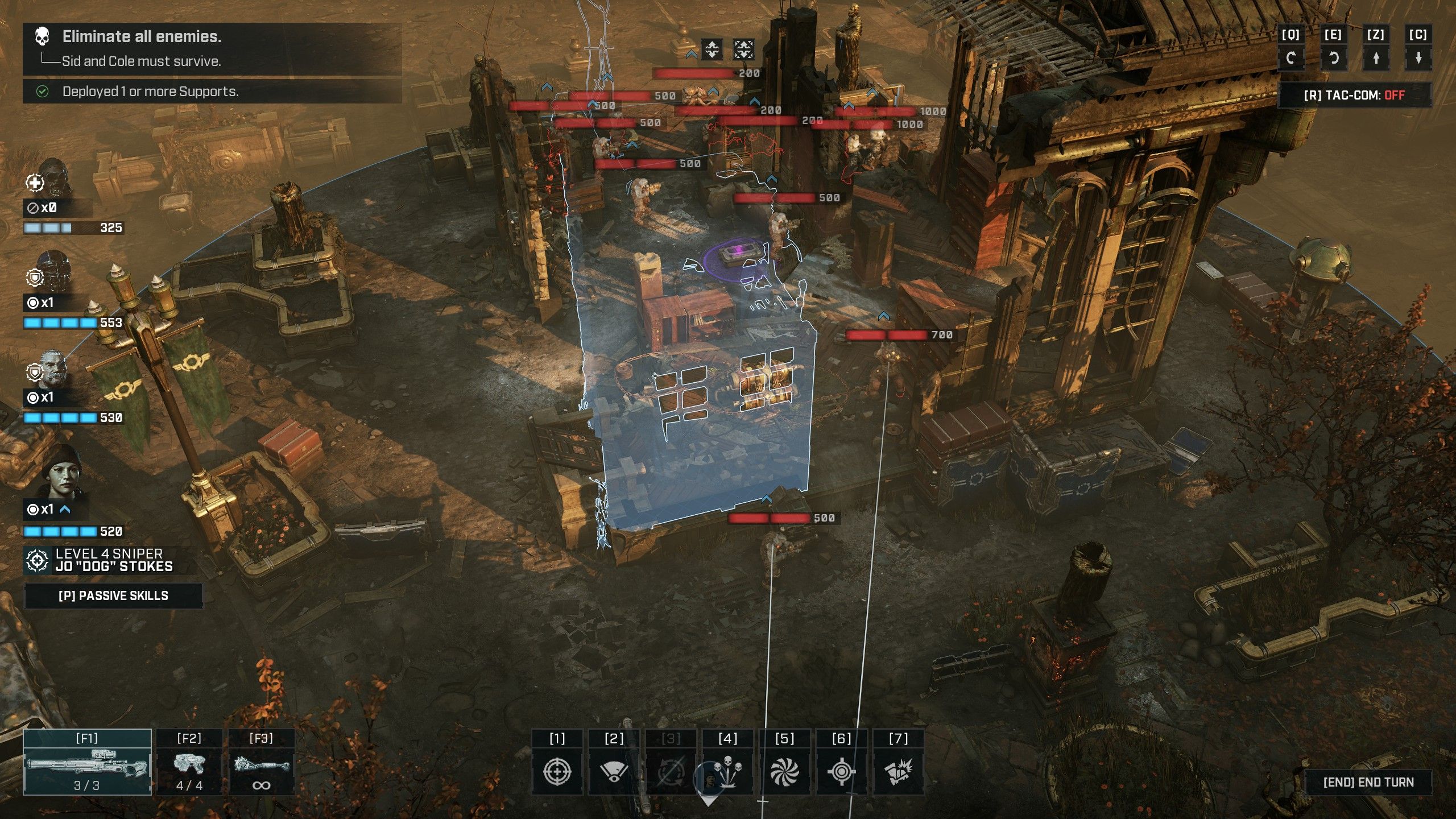

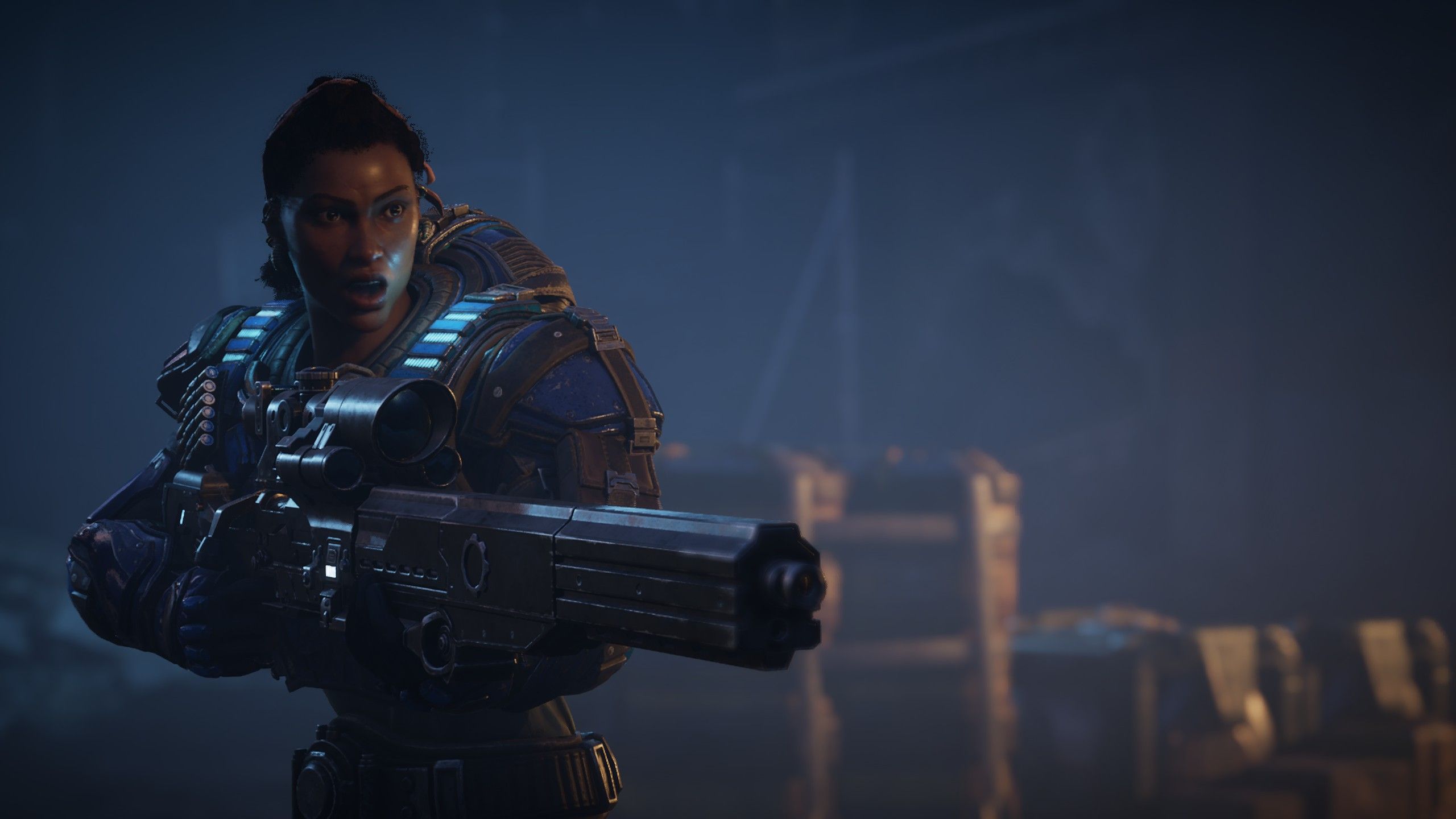

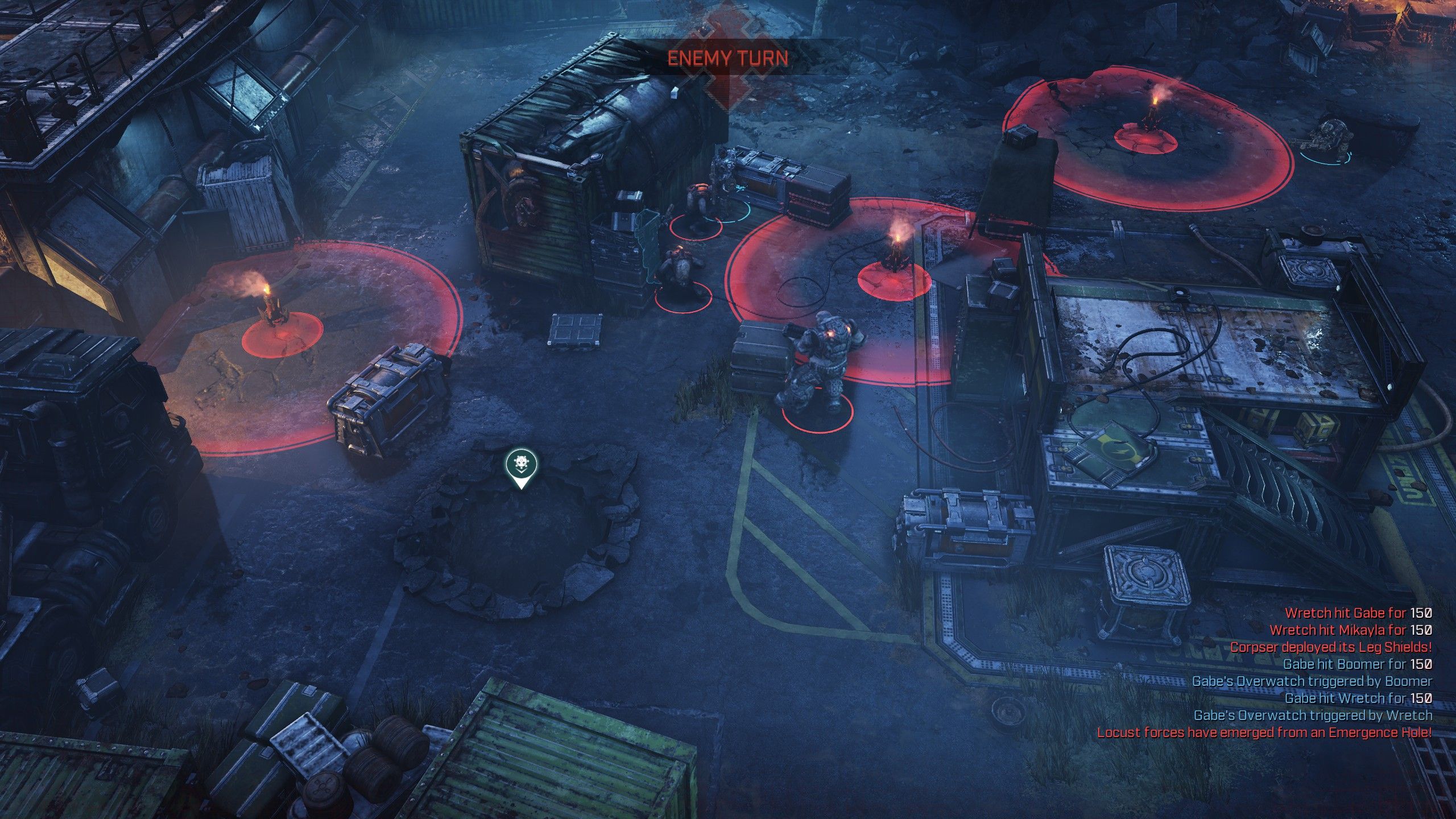
Above: Gears Tactics is a great-looking strategy game
Each of the five classes—support, vanguard, scout, heavy, and sniper—have many skills that play into the action system in clever ways. The sniper can keep taking more shots by getting kills. The heavy, who carries a massive chain gun and stacks accuracy bonuses for standing still and firing multiple turns in a row, can earn an extra action point for going into overwatch, making it the perfect defensive class. The vanguard has tools to knock enemies out of overwatch, encouraging you to keep pushing forward.
Even 20 hours in, when I started getting tired of Gears Tactics’ repetitive structure, I was still having a good time with those moment-to-moment decisions and all the ways my squad could work together.
On the campaign trail
Where Gears Tactics diverges most dramatically from XCOM is its linear campaign, with no “meta” strategy layer to manage. This is not a sandbox experience. There’s no world map where you choose locations to visit, no researching new gears, no gameplay systems to interact with outside of combat. This largely works for Gears Tactics: It is a straightforward game, and the depth and creativity of its combat system shows the benefits of where it focused. But it unfortunately means repeat playthroughs will present a mostly identical challenge. And I found that without some of that meta strategy to change up how I was spending my time, the campaign started to drag by the end.
Each of the campaign’s three acts ends with a setpiece boss battle, which is an exciting thing to have in a tactics game. Unfortunately all three bosses use essentially the same mechanics and they don’t change throughout the fights. The bosses also have giant health pools, so after five minutes you’ve seen all the boss has to offer but likely still have another 30 minutes of health to chip away at.

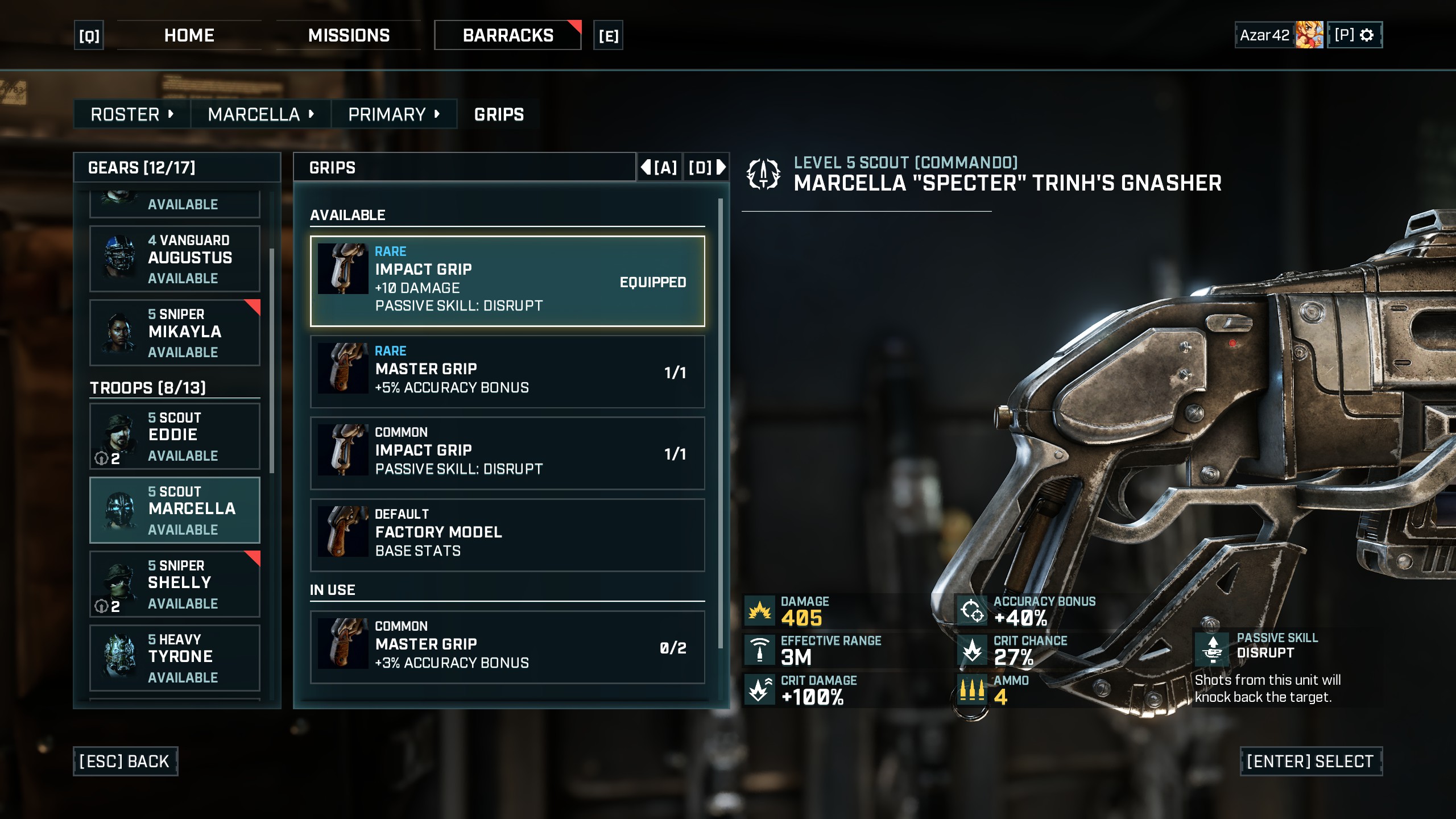
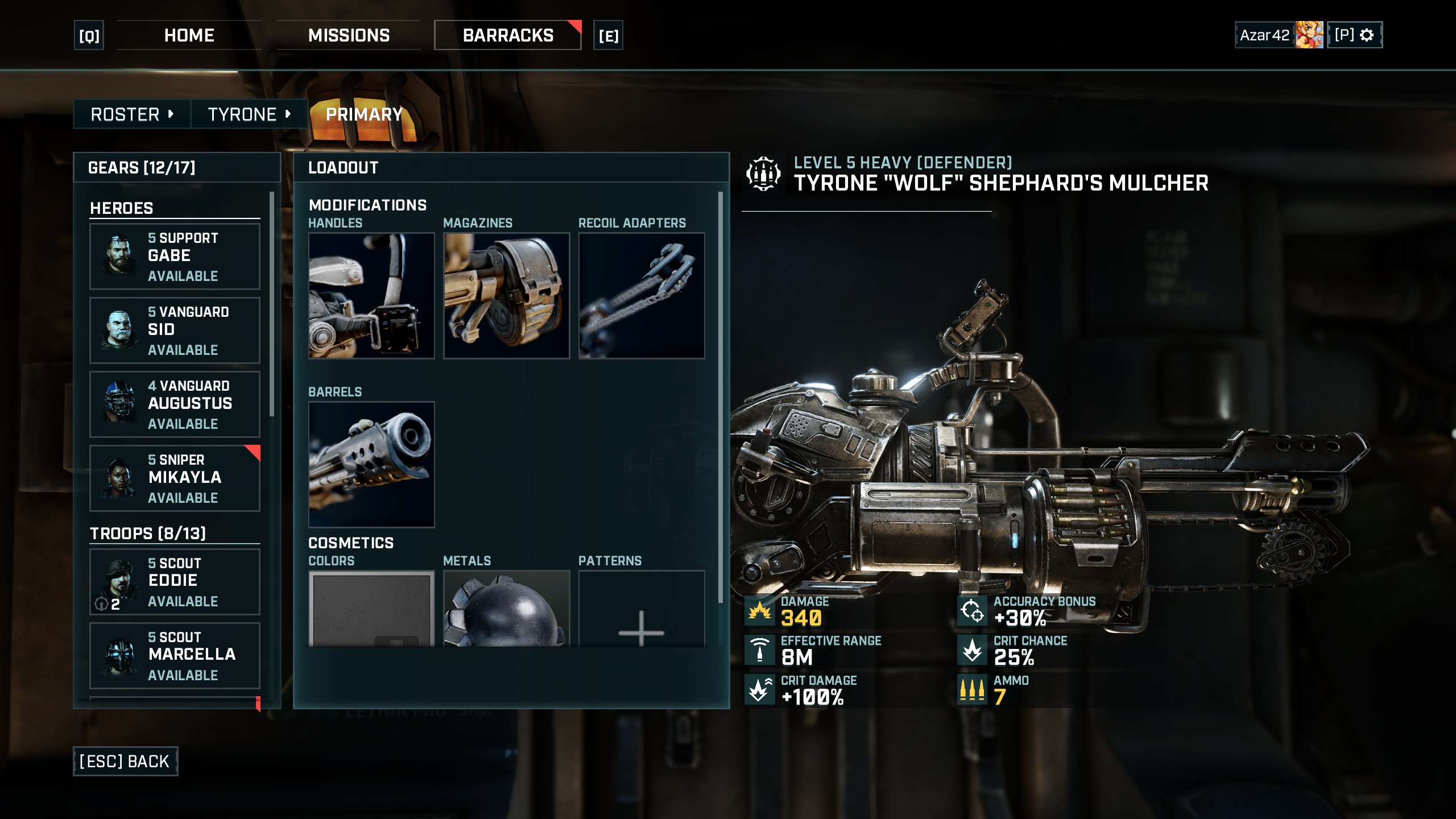

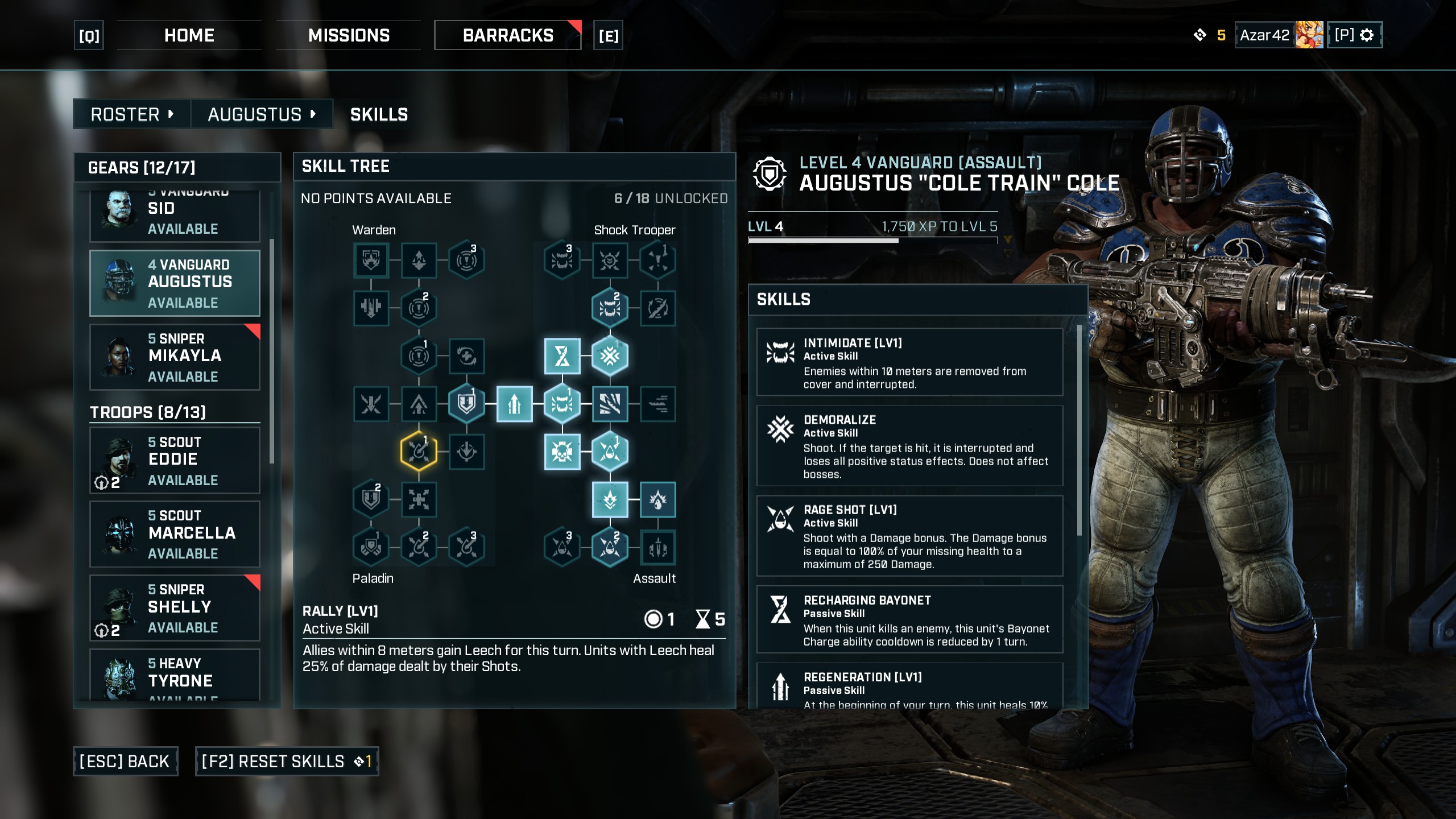

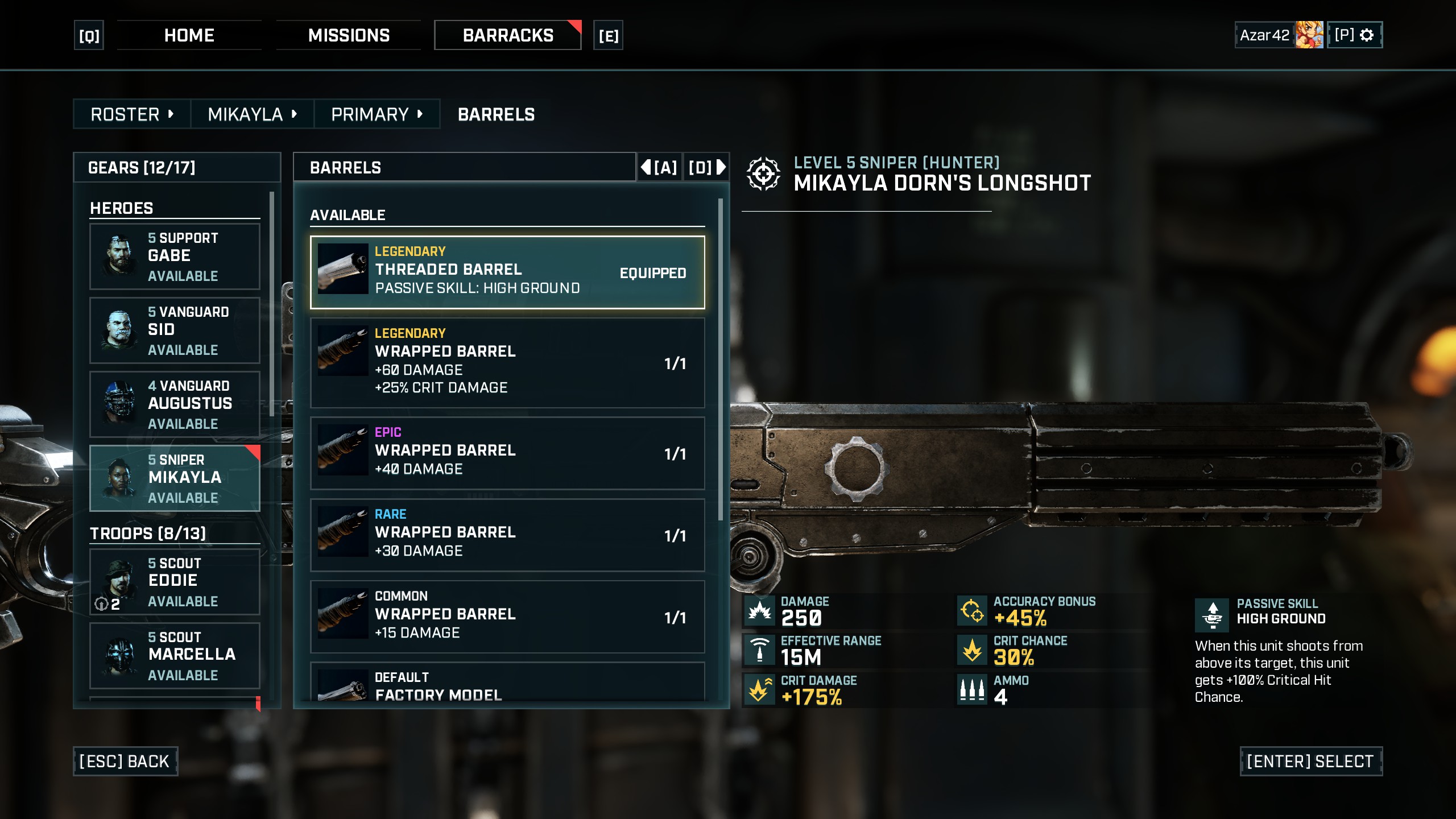
Above: Gears’ extensive skill trees and weapons customization
Between campaign missions, Gears Tactics pads out its running time with side missions that you have to complete before continuing the story. Towards the end these feel like a slog because you have to do a lot of them, and the linear structure doesn’t let you pick and choose when you want to do them—they’re purely a roadblock to progress. In an RPG or even in XCOM, which is more open-ended, I can set the pacing myself, taking on side missions in between major battles.
This frustration is exacerbated by how thin the narrative is for some of the campaign. I took on a side mission where I held a pair of control points against waves of Locust attacks, then ended up doing the exact same thing in my next story mission, with just a couple lines of dialogue added to the latter. The same basic mission types are repeated many times by the end, which would be fine for the side missions if the campaign didn’t also fall back on using them too. The cutscenes look great, but the story is frontloaded and especially stretched out in the third act. A few more unique setpieces would’ve helped there.
Already I’m hoping for a Gears Tactics 2, because you can see the promise of its foundation: The combat, the skill system, and the top-notch presentation, which made me feel much more involved in the action than the usual puppet master up in the clouds.
The skill trees for each class branch into four specialties, but you can freely choose how to mix those skills to create a more hybrid build. The shotgun-toting scout, for example, can head towards the Raider speciality and focus on pure shotgun damage output, with a powerful Rampage skill that will keep targeting new enemies as long as each shot brings one down. Or they can spec towards Commando, which opens up a super useful proximity mine and increases explosives damage. But a lot of great skills lie in between the specializations, like buffs to the scout’s cloak ability that lets you slip through enemy overwatch unseen.
Most of my characters ended up hybrids that maxed out only one skill tree, and as I recruited new soldiers that were specced differently I kept finding fun new skill combos I hadn’t used yet. Weapon customization, which lets you swap out gun parts with better pieces you’ll find scattered throughout campaign levels, ties nicely into the skill system, buffing overwatch damage, or increasing movement range, or lowering cooldowns on grenades. “Legendary” rarity parts are typically rewards for difficult optional mission objectives and they’re satisfying to earn, because you know they’ll come with some big stat perks.
Like the pacing of the campaign, Gears Tactics’ loot system does lose its charm towards the end. With piles of similar gear that stopped being fun to sort through, I lost interest in going out of my way during missions to pick up more cases.
Gears Tactics’ structure couldn’t quite sustain the 25 hours or so it took me to get through the campaign, but slap the combat into a sequel with a couple more strategic systems that balance out the variety and pacing, and I’d honestly rather play it over XCOM, a recommendation I never expected I’d make.
Read our review policy
Clever combat abilities and brutal executions translate Gears of War into a deep, fast-paced strategy game.



